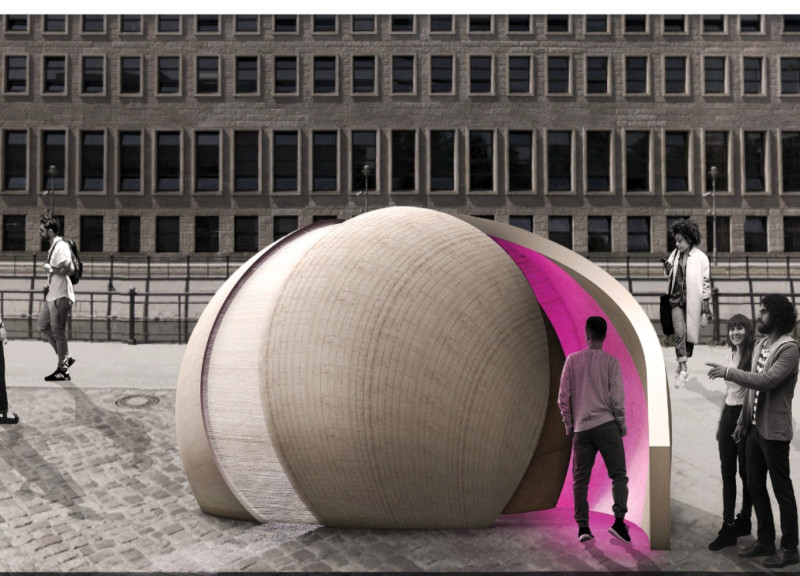5 key facts about this project
The Hour of Pearl is a memorial located in Berlin, designed to express the deep connections that form amidst the challenges of love and conflict during the Cold War. The design features two reinforced concrete walls that curl toward each other, symbolizing the merging of divided lives. This thoughtful approach invites visitors to experience a journey through separation and reunion, grounded in the cultural significance of Berlin.
Design Concept
At the heart of the memorial are the two intertwining walls. Their gentle curves create a space that represents both unity and the longing for connection. This form honors individuals who wished to reunite with loved ones during a time of great division. Visitors are welcomed to reflect and find meaning in the space, experiencing the nuances of personal and shared histories.
Materiality
The structure integrates a Litracon concrete aperture, allowing light to filter through and cast a warm glow. This feature enhances the memorial's ambiance and conveys themes of hope and enlightenment. The presence of a laminated wood door adds a tactile contrast to the concrete, introducing warmth and approachability to the overall design.
Environmental Engagement
An LED light panel contributes to the atmosphere within the memorial by creating dynamic lighting effects. This technology not only highlights the architectural features but also connects the memorial to Berlin's artistic culture. The sounds of techno music echo in the background, enriching the visitor experience and linking the memorial to contemporary expressions of creativity.
Narrative Depth
The Hour of Pearl addresses important themes of division, resistance, and reunion, creating a space that reflects complex historical narratives. Each design element works in harmony to foster personal reflection while honoring collective memories. It engages visitors in a dialogue about the legacies of separation and the enduring power of human connection.
As light dances across the interior surfaces, shadows shift and change, drawing attention to the way illumination transforms the space. Moments of contemplation arise as visitors engage with this interplay, enriching their experience within the memorial.



















































